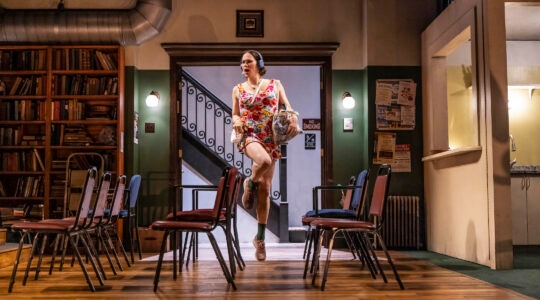Belgrade is among the ugliest cityscapes I’ve laid eyes on, and that’s saying something. It’s also among the most exciting places I’ve ever been.
In an unanticipated twist, Oggi and I ended up spending a recent whirlwind weekend in the Serbian capital — and it was unquestionably the highlight of our Central European summer road trip, Socialist brutalism and all.
The E-75 highway slices directly through central Belgrade en route to Budapest, offering a close-up panorama of a city in postwar decline. You can feel the scale of a great capital, which Belgrade once was, and the ambition of empire, which Serbia once shared as part of mighty Austria-Hungary.
But left out of the European Union and largely bypassed by the region’s economic boom, Serbia is marginalized as never before in modern memory — and the deterioration of Belgrade offers a sober visual reminder. Awash in drab, dingy shades of gray, the city’s façades are stained with soot and crumbling in ways that are the opposite of picturesque.
Alongside the usual socialist-era blocs are toweringly weird monuments to 1980s impulses, including one building that had us guessing at the architect’s inspiration: A space ship? A giant syringe?
At this point you may wonder why anyone would spend time on this stretch of the Danube, given that Budapest is nearby. The view from one side of the Sava River, which intersects with the Danube in Belgrade, was an aesthetic assault; the postwar bloc zone on the other side was even worse. As we drove along a waterfront of hollowed-out shells, and the GPS told us our hotel was nearby, my heart sank.
But that hotel. I have never seen anyplace so chic in all my life (and that is saying something). Beautiful things surrounded us: beaded lampshades, Cyrillic graffiti ceiling art, coffee tables made from coffee-table books, cartoon masks, brilliantly patterned textiles.
And I have rarely witnessed such vivid, high-fashion street life as we did during our passeggiata on the boulevard below — a scene so fabulous, it felt like a 1960s European movie.
Lively, pedestrian-only Knez Mihailova Street offered a parade of this season’s hemlines and hairstyles, along with elegant window-shopping. I tucked into a café and ordered what everyone else was having: a parfait dolloped with clouds of Chantilly, chocolate sauce and thick, sour-cherry compote.
The sounds of live violin and accordion music drifted out of cafés onto the streets, where crowds sat drinking Aperol spritzes at outdoor tables well past midnight.
In a few well-preserved blocks by an ancient citadel, I found the Belgrade of legend: Old World dining rooms draped in red velvet, artisan boutiques hidden along cobblestoned alleys, and world-class paintings in a neoclassical mansion.
Nestled between clothing stores on Knez Mihailova, the Zepter Museum is housed in the former First Bank of Croatia, an Art Nouveau fantasy of marble columns, mahogany staircases and stained glass. It’s a compelling showcase for modern Serbian painting and sculpture — and a window into the country’s fractious 20th century, including bold artistic explorations of the 1990s Balkan Wars.
The breadth of both technique and subject matter on view underscores the sophistication of Yugoslav artists, who enjoyed greater freedom of movement (and therefore, of influence) during the Cold War than many of their peers behind the Iron Curtain.
Polyglot artist names also reveal the region’s multi-ethnic character. On our visit they included Nandor Glid, a Hungarian-Serbian Jew famous for his monument at Dachau, whose sculpture “Spain” portrays the expulsion of Jews from Iberia, Torahs and all, on a symbolic oxcart.
The art dramatizes a perspective familiar in Belgrade, a European crossroads that has seen — and generated — a good share of refugees. However, chatting with the museum docents, I heard a refrain repeated throughout my travels in the former Yugoslavia: that Serbia has always been too wrapped up in its native conflicts — between Orthodox Serbs, Catholic Croats and Muslims — to bother with anti-Semitism.
Alas, our weekend stay was too spontaneous and ill-timed to include a visit to Belgrade’s synagogue, or to explore its tiny Jewish community, an East-Central mix of Ashkenazim and Sephardim. That’s for next time. Because I will certainly go back to Belgrade, crumbling buildings and all. Beyond the grim cityscape is a dynamism that I find intoxicating.
On a street corner, I stopped to buy coasters hand-painted with brilliant red and blue birds. “Sparrows are the symbol of Belgrade,” the artist explained. “They are small, but they fly unbelievably high.” In Belgrade, where residual ugliness is everywhere, beauty is never taken for granted.
The New York Jewish Week brings you the stories behind the headlines, keeping you connected to Jewish life in New York. Help sustain the reporting you trust by donating today.




